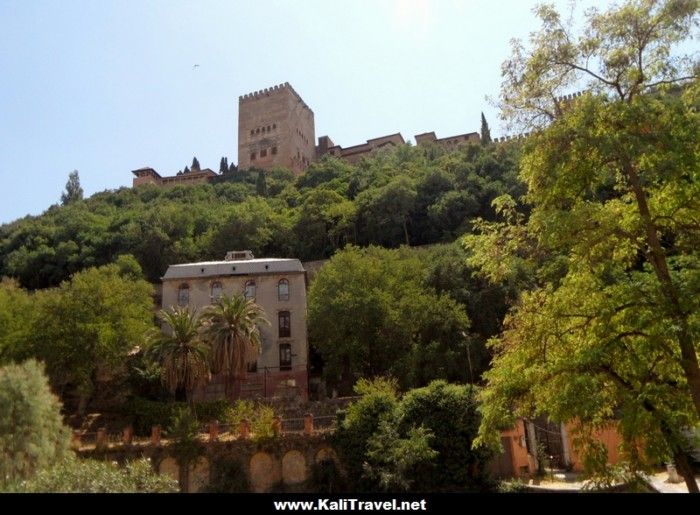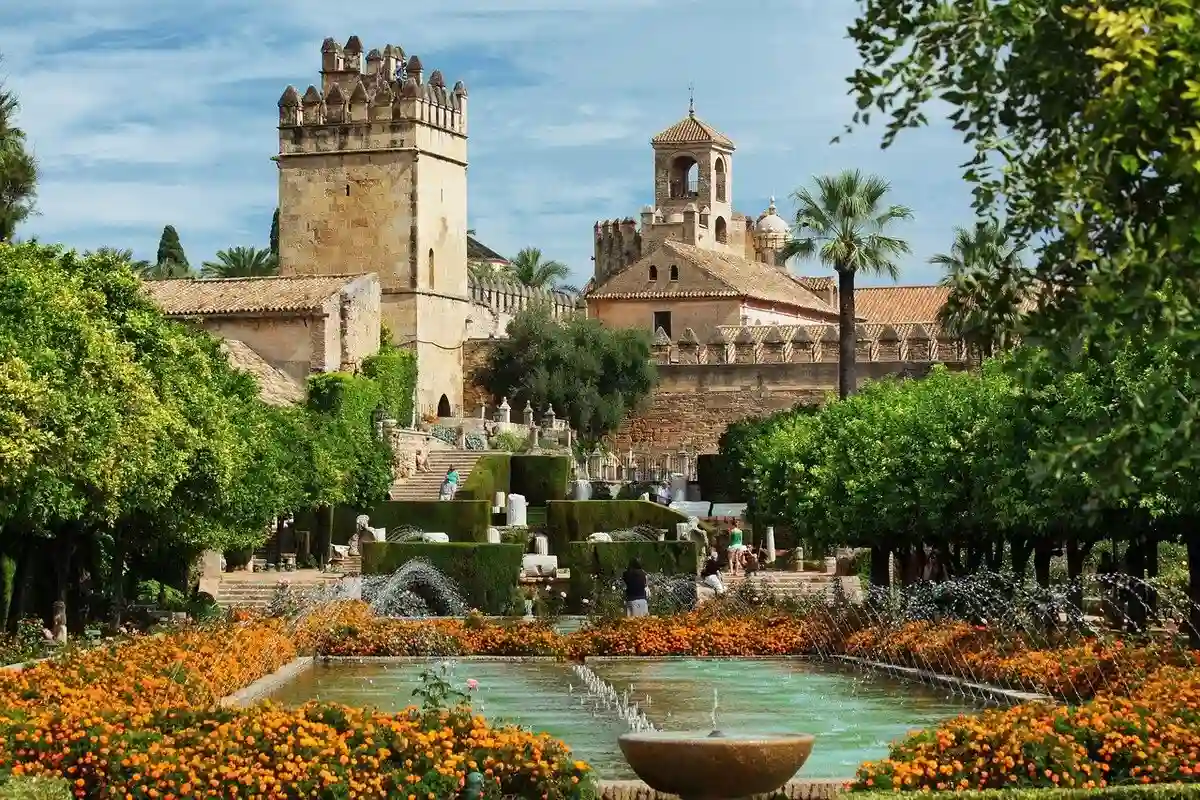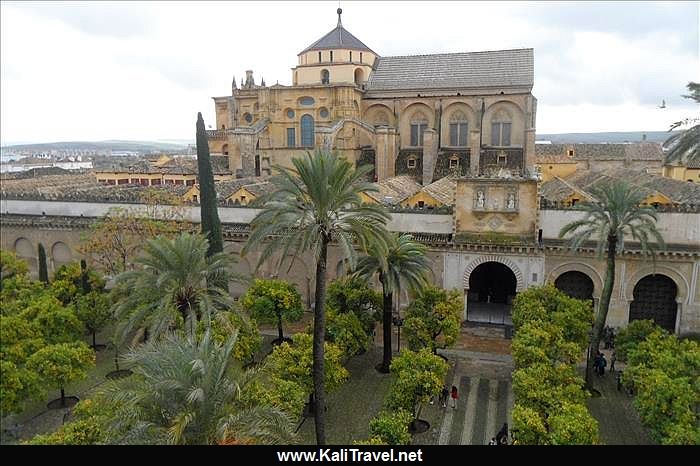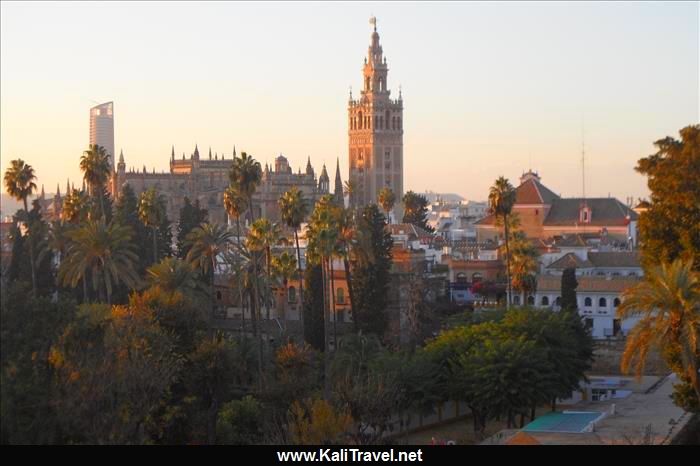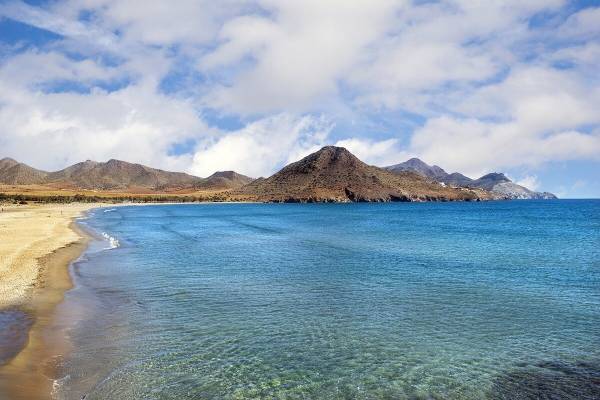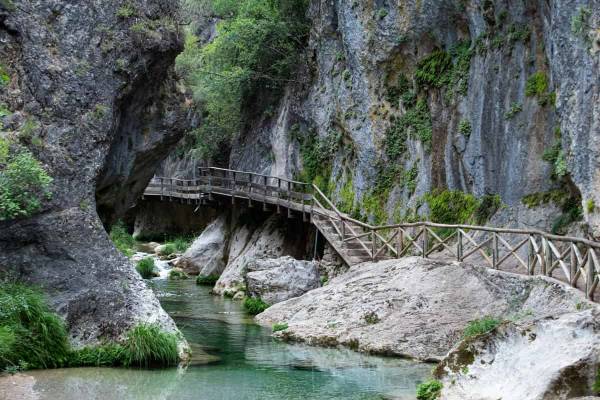The white Moorish village of Mojácar is perched high in the hills, at the edge of the Sierra de Cabrera in Almería province, on Spain’s warm southeastern coast. The road winds upwards from the Mediterranean shore towards Mojácar, hiding in the folds of the mountains. The sunlit view to the shimmering beaches of Mojácar, and Cabo de Gata nature park in the distance, is one of the most extraordinary sights in Spain!
What to See in Mojácar and Cabo de Gata in Almería (Spain)
Original text by Kali Marco.
Mojácar Village

From Plaza Nueva there is an unique view of Pyramid Valley, a red desert landscape dotted with volcano like cones. The original pretty medieval architecture can still be appreciated in spite of craft shops and street cafés. Eighteenth century Ermita de los Dolores chapel is here in the main square.
Climb the twisting lanes and steps to the highest point of the village, the ‘Mirador de Castillo’ where the impressive panorama across the 17 kilometres of Mojácar coastline, stretching far into the horizon, can clearly be seen.

I spent a while exploring the myriad of alleyways, wandering between immaculately kept little houses, potted geraniums at the windows, and looking over the array of roof tops.
Back down to the square Juan and I followed the avenue up to the Santa Maria Church, made of huge slabs of stone it was originally built as a fortress in 1560. In front of the church stands a marble statue of the Mojáquera, attired in Arabian robes with her face veiled. This fountain with 12 taps spouting pure water is part of Mojácan history. To the side is a stairway to Plaza Parteme, an old moorish cemetery.

En Medio street follows the old boundary wall that once protected the higher part of the village, leading to the town hall square and the city door archway (Puerta de la Almedina). Dating from the 15th century it is embellished with the local coat of arms.
At one side lies the Casa de Torreon, an old lodge, once used for paying the taxes required to enter the town. A short walk away is Plaza de Flores opening onto the old Jewish quarters, a labyrinth of tiny alleyways.
Indalo Man

Many houses have the Idalo sign painted on the door, to protect against evil and for good luck. It has been used in Mojácar from ancient times, originating from Neolithic cave paintings dated 2,500 BC in Cuevas de los Letreras caves, at nearby Velez Blanco.
The Indalo man is the Almerian symbol, named after Saint Indalacio and makes a traditional gift engraved in silver jewellery and hand painted ceramics.
Ancient History of Mojácar
Mojácar has been populated since the Bronze Age, around 2,000 BC. Phoenician traders and Carthingineans arrived later. Under Greek domain the settlement was called Murgias Akra, from whence came the latinized Moxacar, the moorish Muxacra and finally the current name of Mojácar.
The North African Moors established themselves in Spain in the early VIII century, later ruling from Córdoba and incorporating this territory into the Kingdom of Granada. The town found itself on the frontier with Christian forces to the east.

Walled towers and fortresses were built or reinforced during the XIV century but did little to discourage the Christian invaders. Fierce battles followed, in the bloody event of 1435, most of the inhabitants were put to the sword. On the 10th of June 1488 a legendary meeting was held by the Mojácan Moorish Fountain between the local Moors, Jews and Christians where the pact of free association was agreed upon, ending the hostilities.
Several droughts brought about the decline in the town’s fortunes and subsequent migration to Northern Spain, Europe and South America. In the 1960s tourism reversed this trend.
Mojácar: Tourism in the 1960s
Back in the fifties or early sixties, when only the most adventurous tourist strayed into these lands, Mojácar became something of a cult colony. Painters were drawn by the marvellous, all year round, clarity of light. Moviemakers followed, nearby Tabernas becoming the film industry’s capital in Europe – making numerous Spaghetti Westerns.
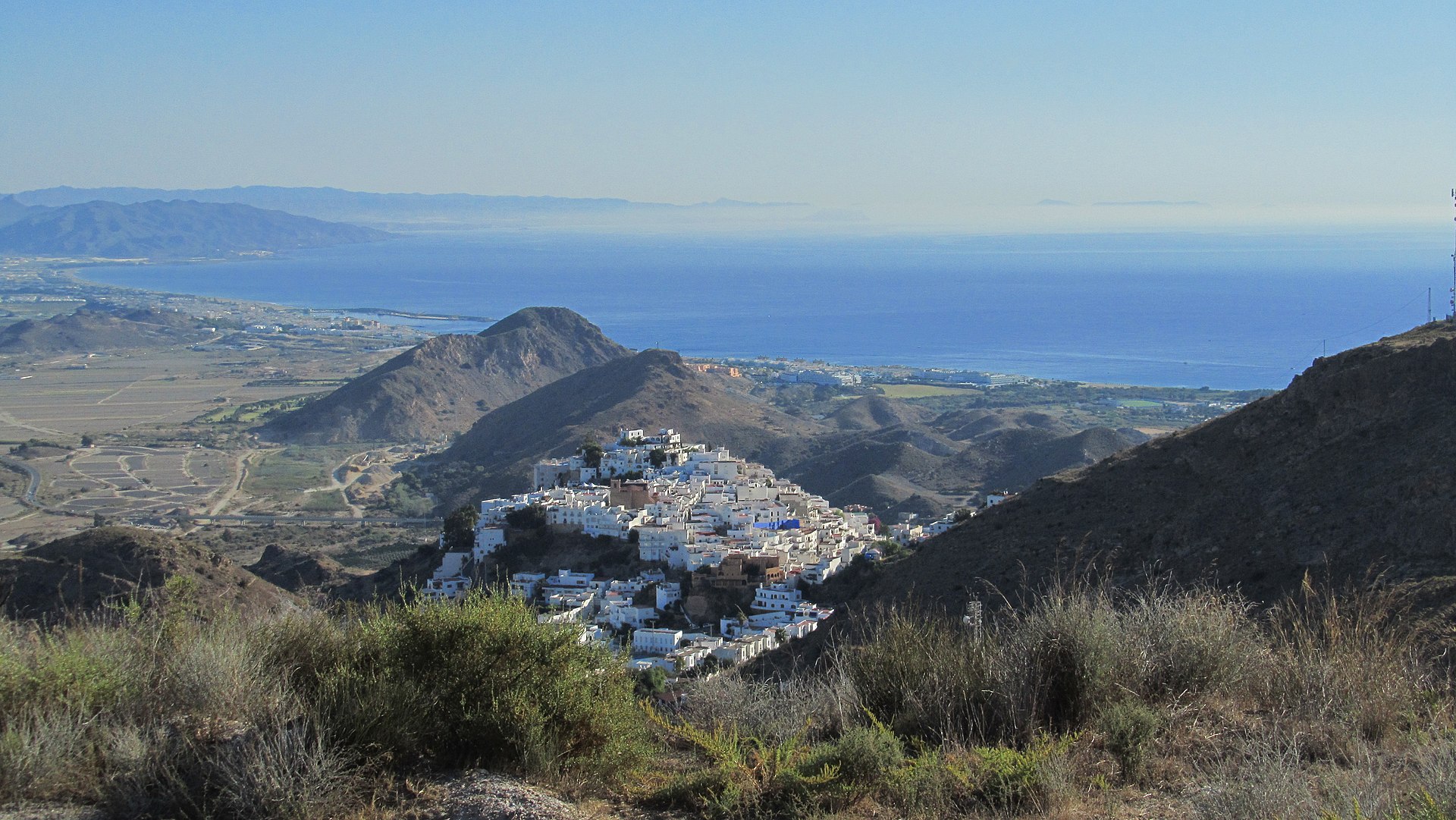
As the seventies progressed advertising photographers arrived, drawn by the same light and exotic locations. The artists never actually went away, 12 separate exhibitions are running concurrently. An important number of painters, sculptors, writers, theatre, film and television producers, musicians, photographers, actors and poets still have homes here.
Mojácar Coast
Juan and I first discovered Mojácar some 30 years ago, travelling down the coast from the Costa Blanca with a vague notion of staying somewhere beyond the Murcia region. Driving further south into a black boulder strewn mining district and crossing into Almería Province it was a dismaying sight with a bleak scarcely inhabited landscape.
When I glimpsed Mojácar shimmering on a peak in the distance we were intrigued. A quiet road bordered an immense stretch of sandy beach, a few seaside hotels dotted along the way. Being able to stay only the one night left us little time to explore the village and enjoy a stroll along the sands.

Always promising ourselves to return we finally made the trip 20 years later. The new motorway cut hours off the journey making it a lot simpler. Quite by chance we chose to stay in the typically whitewashed, beach front, Virgen del Mar Hotel.
This time there were more hotels to choose from and restaurants to enjoy. During a leisurely walk along the new promenade English voices could be heard but the peaceful atmosphere was basically unchanged from before.
Where to Stay in Mojácar Playa
Having fallen in love with the place, this year we made the trip again, with the idea of exploring further south. I was utterly amazed this time, as the area from Garrucha (a fishing village famed for fabulous seafood) to Mojácar has been developed with some very upmarket five star hotels with beautiful grounds and golf courses.
All along the Mojácan coastline numerous complexes have been built, although the authorities have seen that buildings are low rise and in keeping with the local architecture.
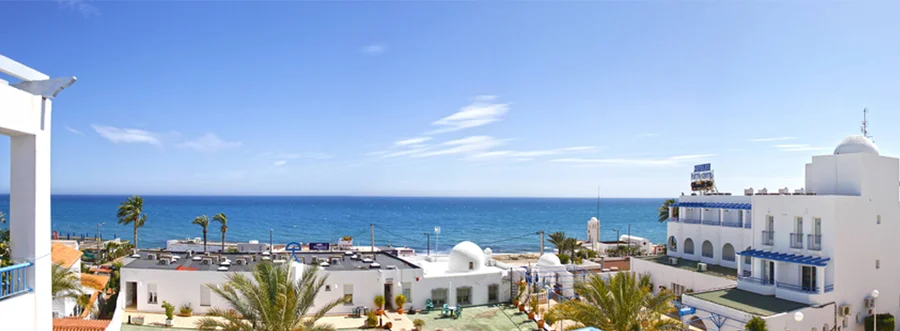
We were glad to find our small and friendly family hotel still there. We were given a warm welcome by the owner Pedro Flores. The Virgen del Mar has a lovely peaceful Mediterranean atmosphere, decorated entirely in white and blue, commanding a magnificent view over the bay. It is a luxury to fall asleep at night listening to the waves not far away.
The Flores family have apparently been pioneers within the tourist trade in the village since the sixties. Our host’s father, also Pedro, opened the first ‘chiringuito’ beach restaurant, with members of the family going on to open hotels and camping sites. Pedro gave us a lot of interesting information on the area and handed me the hotel’s useful leaflet edited in English
Beaches of Mojácar
Mojácar enjoys over 3,000 hours of sunshine each year, with a practically non existent winter. From Marina de la Torre, near Garrucha, to Sopalmo beach, near Carboneras, there are 17 kilometres of Mojácan shoreline. Twelve of these are protected from any development, known locally as the virgin beaches.
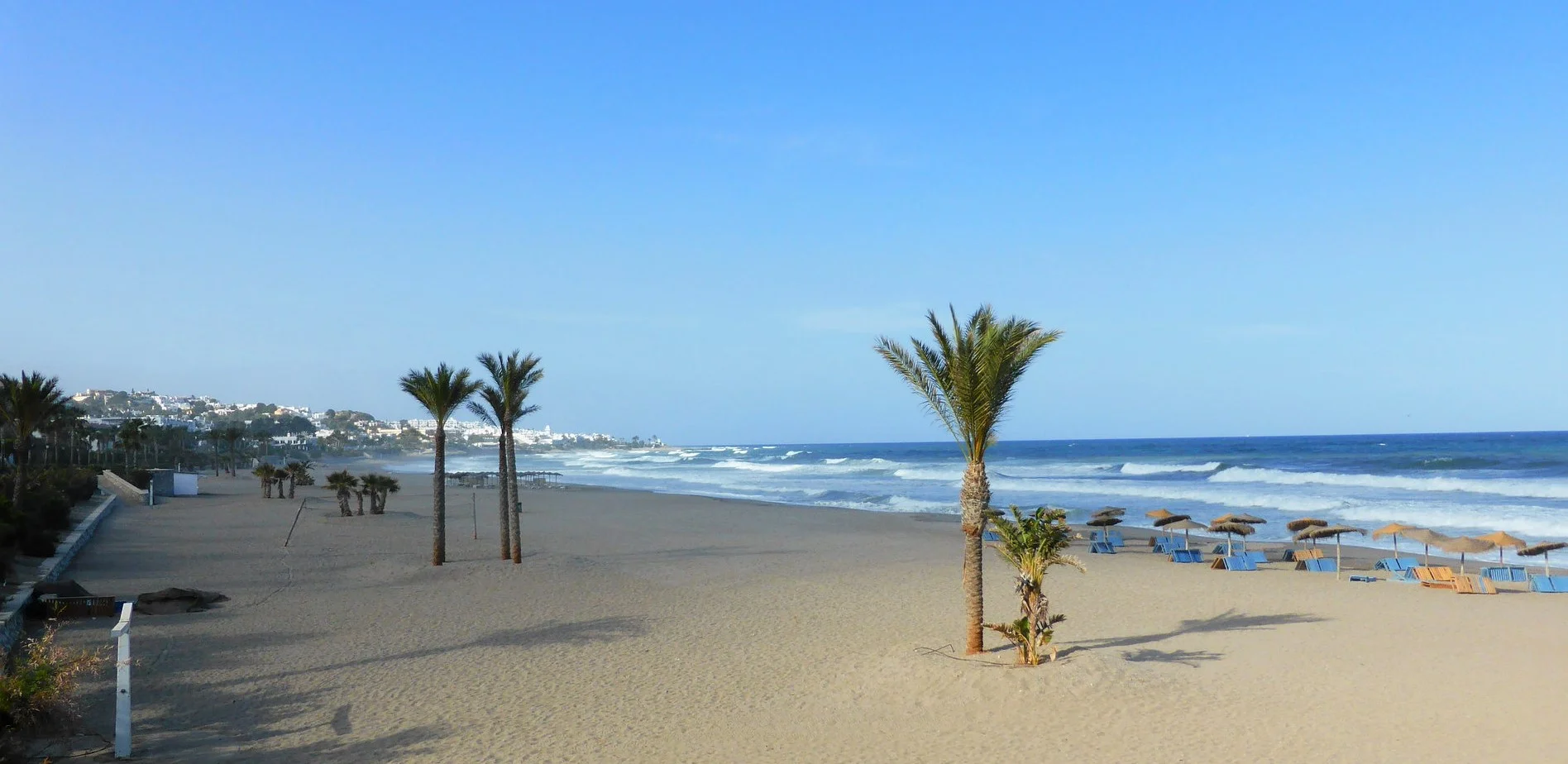
Passing Mojácar’s main seafront you’ll come to Torre de Macenas, a small fortress from the XVIII century. Playa El Sombrerico, the beach beside this ancient stone tower, has been immortalised in several films. From here a footpath leads to El Pirrulico watchtower and a spectacular view of the entire coast.
Continuing further, past banks of volcanic rock, the track descends to Bordernares beach and Chiringuito Manaca, the beach bar from Orson Welles’ Treasure Island movie. Some stretches of this coastline are only accessible on foot or by sea.
Although Juan and I were enjoying a few days relaxing, Mojácar is also geared for numerous sports and leisure activities. Sea diving, windsurf, cycling, horse riding, paragliding for the more adventurous, tennis, and the excellent golf facilities. The annual 4×4 rally is a popular event. Mojácar is also an ideal base for walkers.
What to See Beyond Mojácar
Tabernas Desert

The extraordinary natural park of Cabo de Gata was formed by volcanic eruptions, with basilic formations that cut through the cliffs, coves and beaches to the sea-bed below the crystal clear waters. A trail of fishing villages are scattered along the Mediterranean coast.
Beyond is the uncultivated land of Campo de Nijar, dotted with white villages and towns, and the only desert to be found in Europe. The Tabernas Desert is an area of extreme aridness with a lunar landscape scarred by ravines and gullies.
Carboneras and Playa de los Muertos
Leaving the tourist enclave of Mojácar, follow the coastal road westwards past deserted beaches, around the headland, to reach Carboneras a thriving fishing village. Passing the port, the road descends to Playa de los Muertos beach, well known in the area for it’s stretch of fine white sand sheltered by high cliffs. Nearby the Rambla Carbonera has been immortalized in the filming of Lawrence of Arabia.
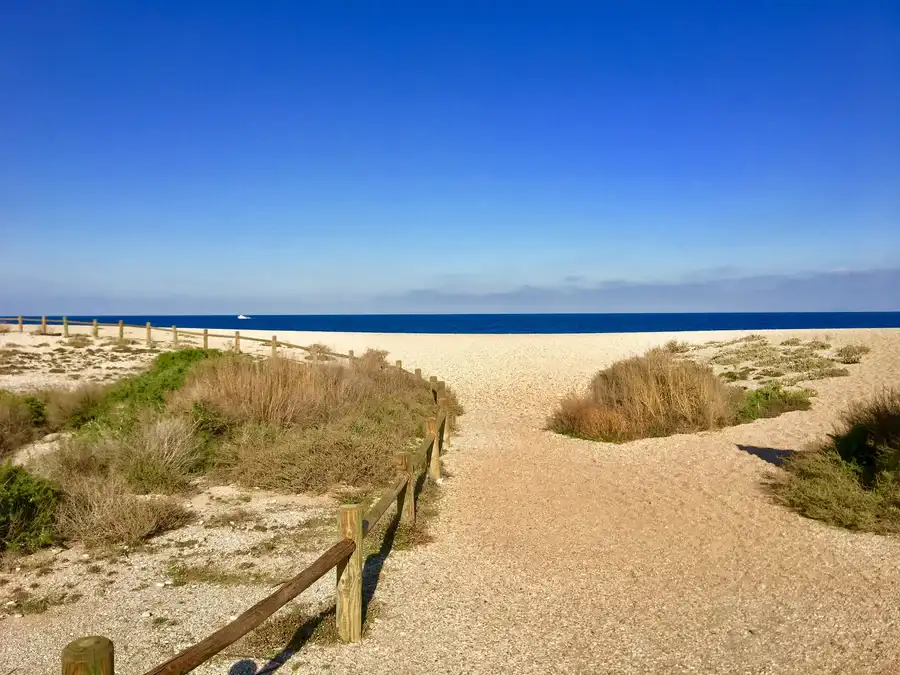
The road now leaves the coast for several kilometres entering the Cabo de Gata-Nijar Natural Park. The originality of the volcanic landscape, unique in Spain, strikes one immediately, the dark rock formations, eroded for over seven million years by the wind, shimmer in the sun. Our next discovery was the tiny quaint fishing haven of Las Negras, colourful with tiny boats hauled up the pebbly shoreline.
Rodalquilar Gold Mining Town

In the middle of nowhere is Rodalquilar an almost abandoned mining town, gold fever once throbbed though these barren lands but the last gold miner has long since left.
Back in the eighteenth century British engineers mined for gold, silver, iron and copper. There is a visitors centre ‘Las Amoladeras’, where more information can be obtained.
Three kilometres down a beaten track is Playazo de Rodalquilar. This tranquil stretch of fine golden sand is apparently a non official nudist beach.

The surrounding countryside reflects the beauty of the arid Almerían landscape mountains, palm trees, mineral incrusted rocks. The occasional campers find their way here passing the night under the clear, uncontaminated starlit sky.
What to See on Cabo de Gata Coast
La Isleta del Moro is another tiny nucleus of whitewashed cottages, in the shadow of the colossal peñon of the same name, which overshadows a tiny isle. From times immemorial folks here have made their living from the sea.
Ships have taken refuge from perilous sea storms in Escullos Bay throughout the centuries. Watched over from Don Felipe Castle, these waters were once the dangerous haunt of pirates boarding the merchant ships that sailed from Valencia to Almería.

There is no direct route, just follow the byways to reach out of the way coastal hamlets and then drive back to the mainroad before turning off once again. Lanes weave and twist up and down affording breathtaking views of the sea. The Mirador de la Amatista is an ideal vantage point to park the car, take photographs and enjoy the spectacular scenery.
San José Fishing Village

Playa de San Jose is a marvellously quiet small coastal resort, a wide bay nestling between two mountains. With a sandy beach, safe for bathing this is a lovely place to stay.
A palm lined promenade, backed with turn of the century holiday villas, leads to the leisure port where several busy fresh seafood restaurants beckon enticingly.
No mass tourism here, no high rise flats or incessant traffic. The Almerían coast is the last to retain the so called virgin beaches, devoid of urbanisation.
Best Beaches in Cabo de Gata
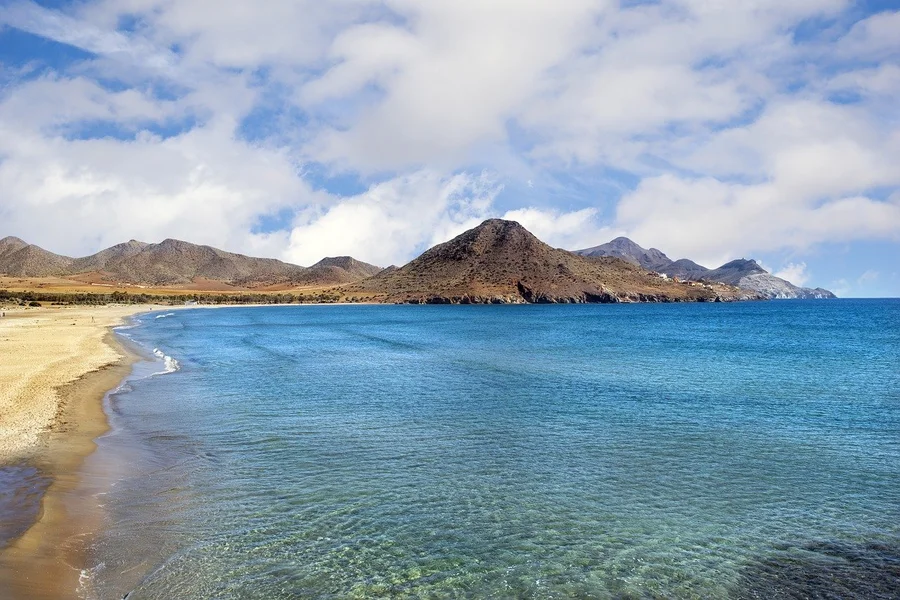
The sandy track to Los Genoveses is suitable for vehicles although pretty dusty. The spectacular bay comes into view in the distance, surprisingly surrounded by green vegetation which turns out to be a field of cacti. A leisurely walk down to the shore line and a stroll along the soft sands is a pleasure.
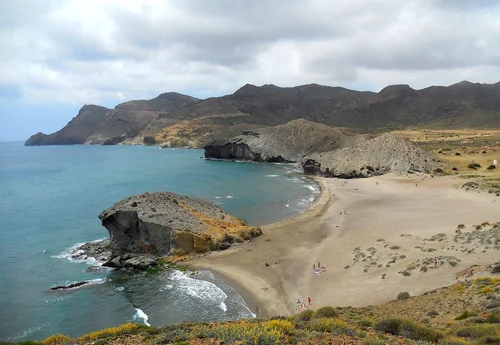
Back into the car and to the end of the trail, Monsul is a magical cove. Running down sand dunes, this is my favourite beach of all. The winter sun had been shining all day and with the rocks sheltering us from the cool breeze we stripped down to T-shirt and shorts.
While Juan sat back and relaxed on the dark sand I ambled around taking photographs. Monsul is surprisingly popular for such an out of the way place, everyone clothed needless-to-say. Steven Speilberg filmed most of the Indiana Jones epic The Last Crusade here. In more recent times, Spanish pop star David Bisbal filmed a video clip too.
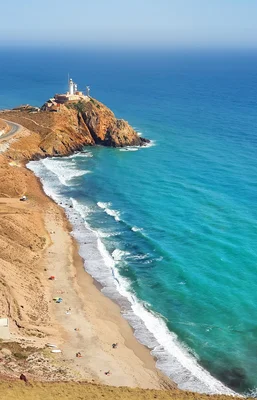
Cabo de Gata Lighthouse
Nor far away over the headland is the landmark Cabo de Gata lighthouse and Corralete Beach. You can either walk along the trails or double back to San José and take the road from here.
There wasn’t time to explore further. This leaves a good excuse for a future visit to the region to see the wonderful salt lakes, wildlife and birds that inhabit the marshes of Cabo de Gata National Park.
The journey back to our hotel took no time at all along the motorway, turning off at Turre, reaching Mojácar at sunset, looking enchanted in the red glow of the dying day.
How to Get to Mojácar (Almería)
To reach Mojácar beach from Alicante (Costa Blanca) take the A7 motorway which joins the E15 motorway to Vera, then take the N340 in Garrucha direction and follow the coast to Mojácar (230 km, 2 hours 30 minutes). Same route from Girona, Barcelona, Tarragona, Castellón, Valencia, inland Murcia; Alternatively, via AP7 toll road which runs down the coast from Elche to Vera.
From Almería city take the E15 to Los Gallardos, A 370 to Turre and Mojácar village (100 km, 1h 10 min); from Granada city via A92 and A7 (230 km, 2h 30 min); Málaga via A7 (290 km, 3hr); Madrid via A3 and A7 (550 km, 5h 30 min).
Related Posts on Places to See in Andalusia
Ultimate Granada Guide: What to See in 3 Days
Visiting Spain and only 2 or 3 days to see Granada? Our ultimate Granada guide explains how to see the historical city sites, and the top things to see and do.
25 Reasons to Visit Córdoba World Heritage City
Córdoba historic centre is a UNESCO World Heritage City in Southern Spain. Here’s our choice of 25 sites to see and the top things to do when you visit Córdoba.
Discover Córdoba, the Spanish city with a 1000 ancient archways and a famous Cathedral Mosque. Here’s our rough guide of what to see in 1 day! Córdoba sits beside the River Guadalquivir in the heart of Andalucía…
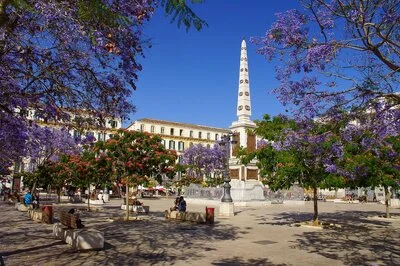
A complete guide to Málaga and places nearby. There are so many things to do in Málaga, lots of history, great food and beaches. Explore Málaga – sun, sea and history on Spain’s Costa del Sol.
Seeing the Sun Set over Seville
Our guide to seeing the sights of Seville in 2 days. We arrived in Seville late afternoon, just in time to see the sun set over Seville skyline, the famous Giralda tower and a dozen church spires backlit by the blazing orange sky.
See Mojácar and Cabo de Gata (Almería)
From the white Moorish village in the hills of Almería, the sunlit view to the shimmering beaches of Mojácar, and Cabo de Gata nature park, is one of the most extraordinary sights in Spain.
Things To See In Sierra de Cazorla (Jaen)
Villages with age-old traditions, historic castles with astounding views, and the lively market town of Cazorla itself, complete the varied landscape of this UNESCO biosphere reserve… Sierra de Cazorla Nature Park in Jaen.
Discover the World with![]() the blog with a focus on independent travel
the blog with a focus on independent travel




